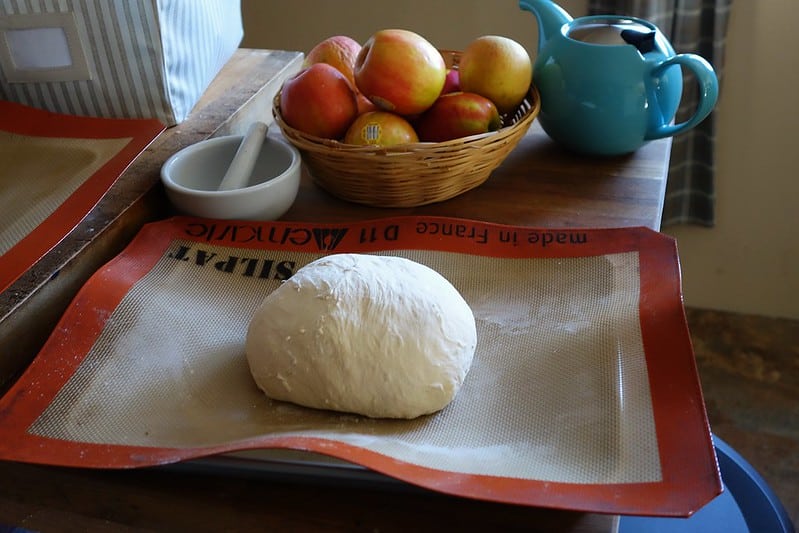There are wild yeasts all around us. Yeast brings life to bread.
Yeast is a one-cell plant that multiplies by a process known as budding. Under the right conditions of water, sugars, warmth, and dissolved minerals, yeast causes fermentation. Carbon dioxide and alcohol (ethanol) are generated by the yeast as a result of the breakdown of fermentable sugars in the dough. This produces tiny carbon-dioxide bubbles that, like little balloons form a matrix and the bread inflates accordingly.
Yeast produces many secondary metabolites such as ketones, higher alcohols, organic acids, aldehydes and esters. Some of these, alcohols for example, escape during baking; that is the characteristic beery smell of bread baking.
Yeast is available in compressed form as brewer’s yeast, best kept under refrigeration, as well as active dry, rapid rise (recommended for bread machines), and instant yeast all of which need not be refrigerated, but may extend shelf life.
Most commercial bread bakeries use compressed Brewer’s yeast in their formulas. When using active dry yeast half as much is required as compared with compressed yeast.
Instant yeast, a dry yeast, relatively recently developed, are smaller granules than active dry yeast, absorbs liquid rapidly, and doesn’t need to be hydrated or proofed before being mixed into flour. Favored on most circumstances.
Active dry yeast is the most commonly available form for home bakers. It’s available in foil ¼-oz packets (7g/2 ¼ tsp), enough to leaven 480 grams (4 cups) of flour.
Rapid rise yeast (bread machine yeast) is instant yeast that may include ascorbic acid, a dough conditioner.
Fresh yeast, also known as compressed, brewer’s, baker’s or cake yeast, is active yeast. Fresh yeast does not keep well; it will last about two weeks if refrigerated. Fresh yeast should be proofed in tepid water 27-32°C (80-90ºF) without contact with salt or sugar.

